Walking into the place where you work out should feel great.
Whether you’re there to build strength, tune up your cardio, or sweat out some stress, you’re working on becoming be a better version of yourself. The last thing you need is to be judged or mocked or side-eyed because of the way you look, the way you talk, or the way you move or anything that may signify that you are somehow “different.”
Fitness should be for everyone—obviously. These eight trainers are ensuring that everyone can get the life-changing and life-enhancing benefits of fitness. That means leaning in to the opportunity to train people who are neurodiverse and may need unique kinds of motivation or a quiet atmosphere. Or creating protocols to train people who use wheelchairs and need specialized equipment and exercises. Or working with trans people who prefer to exercise with a trainer who embraces all body types and has an open mind to the gender spectrum. Or creating a free fitness class in a marginalized community where there are no gyms. These stories—and others—reveal insights that can help all of us on our own fitness journeys and also enable us to be better allies on everyone’s fitness journey.
Equally Fit
Mark Fleming, a trainer on the autism spectrum, embraces neurodiversity at his gym.
The fact that rates of obesity, diabetes, and depression are all higher among those with autism spectrum disorder is the main reason trainer Mark Fleming, who was himself diagnosed with Asperger’s syndrome at age 11, opened Equally Fit, a gym in Tampa for neurodiverse people, in 2018. “Exercise not only improves your overall health, but especially your mental health,” he says. “Having an outlet where you’re exercising and gaining confidence and greater independence can be life changing.”
Fleming (below, left) often works with neurodiverse people who might be distracted by the loud music in a typical gym and who may need different motivation. The goal is to use functional training that incorporates strength and cardio as well as things that can help improve motor planning and social skills. Initially he focuses on exercises that deliver obvious benefits (think balance moves) or feel good (think stretches).Fleming is also studying for a Ph.D. in kinesiology and starting a fitness nonprofit called the Disability Fitness Foundation in order to reach as many people as possible.
Ironbound Boxing
“Iron” Mike Steadman, former U. S. Marine Corps infantry officer, founded a free boxing program in Newark, New Jersey, Ironbound Boxing, and serves as its CEO.
Finding a new purpose as a military veteran isn’t the most straightforward transition. For “Iron” Mike Steadman, 35, a former Marine infantry officer, his civilian purpose came from boxing. In 2017, two years after leaving the service and relocating to Newark, New Jersey, he started the nonprofit Ironbound Boxing, a free boxing program for kids from marginalized communities.
“Giving back was extremely important to me, especially being a Black male growing up in a single-parent home. I understand firsthand the challenges faced by young men and women of color, and I didn’t want to just be remembered as an infantry officer,” says Steadman (above, left). Through boxing and the military, he’d transformed himself from an insecure kid into a college grad, a three-time national collegiate boxing champ, and a commissioned officer in charge of leading others.
Working as a residential housing director at St. Benedict’s Prep in Newark, Steadman founded a small boxing club but needed a gym in order to expand. After being given a space by the city, he raised money from veterans groups and others to get the gear necessary to open. All of the coaches are volunteers.
“Boxing has a violent stigma,” he says. “So you’re going into an urban environment where there’s already a certain level of aggression. And sometimes people in corporate America get confused about why we are teaching these kids how to box. But veterans understand old-school values, the principles of facing adversity head-on while building grit and resilience in the ring.”
Calling Ironbound a gym would be underselling it. Steadman describes boxing as a conduit to “capacity building,” teaching the intangibles—quick thinking, patience, timing—that are key for real-world success. Five years after Ironbound opened, Steadman isn’t satisfied, even though the program has awarded $25,000 in educational scholarships and $15,000 in microgrants to young entrepreneurs. Ironbound has trained 150 kids and sent teams to the USA Boxing Nationals every year. This year alone, it sent six boxers and fully funded their trips. —Clyde Gunter
The Adaptive Training Academy
Founded by ALEC ZIRKENBACH, this nonprofit equips fitness pros with the expertise needed to train people with disabilities.
After his right leg was crushed between two ships while serving in the Navy in Somalia in 2009, Alec Zirkenbach spent almost a year rehabbing before deploying again. Zirkenbach (above, right) leaned into CrossFit to forge the fitness he needed to serve—he says the community spirit saved him—and just before leaving the Navy, he founded Fathom CrossFit in San Diego in 2012. The initial goal was to provide a space where wounded soldiers could train, but that quickly expanded to include all people with disabilities. “Fitness isn’t specifically aesthetics,” he says. “It’s not siloed [away from] your mental health—it’s all connected. Without community-based fitness and a supportive network, I wouldn’t exist today.”
Zirkenbach’s personal experience, as well as what he learned in talking with other veterans, athletes, trainers, doctors, and therapists, led him to develop an adaptive training program for CrossFit and eventually to form the Adaptive Training Academy (ATA) in 2017. It provides fitness professionals with the skills they need to train those with physiological and cognitive impairments, whether that means adjusting exercises for amputees or creating programs for people in wheelchairs.
“One quarter of Americans have a disability, but when you walk into a gym, that’s not what you see, even accounting for people without visually expressive conditions like neuromuscular impairments,” he says. “In every fitness facility, there should be at least one trainer that has taken some [adaptive training] education, preferably ours.” So far, 2,700 trainers have graduated from ATA. Zirkenbach is also the accessibility and adaptive sport specialist for CrossFit and runs the CrossFit Games’ adaptive program, which now has eight categories.
The Front Runners
This running club welcomes all people for group training, fun runs, and more.
The best fitness clubs deliver more than exercise. “When I came to New York, I didn’t know anybody. Now all of my friends are from Front Runners,” says Gilbert Gaona, president of Front Runners New York. “If I didn’t have this club, I would be lost.” Front Runners started in 1974 in San Francisco as a running club for gay and lesbian people, and it now has 100 clubs worldwide. New York’s was founded in 1979 and offers three fun runs and five coached workouts weekly. All adults are welcome. Group runs are divided by pace, and no one runs alone. Runners often ask head coach Mike Keohane how they can get faster, and he has three tenets: 1) Run hills once a week, whether it’s an up-and-down route or hill repeats. There’s no better way to strengthen your legs. 2) Run at high intensity once a week. If you’re breathing easy, push harder and try to maintain that faster pace while exerting the same energy. And 3) Be consistent and patient—your body needs time to adapt.
Free To Move
Trainer AK Mackellar founded their own fitness platform to welcome beginners, the LGBTQ+ community, and people with chronic pain and illness.
When a mountain-bike crash left AK MacKellar with a traumatic brain injury, the personal trainer reset their approach to fitness. “I was always an athlete, always going hard and pushing my limits,” says MacKellar, who lives in Vancouver. “After the crash, my body said slow down.” MacKellar realized that others like them might benefit from a gentler approach to fitness, embracing all body types and with an open mind to the gender spectrum. “Many people feel that they’ll be judged or looked at in some way. Free to Move is for all of them.” MacKellar founded Free to Move in 2020, offering virtual sessions, both live and on demand, plus movement challenges.
The approach resonated. Soon they had 130,000 followers on TikTok, with some reels, like a primer on motivation, garnering 500,000+ views. MacKellar wants to help clients reach their fitness goals, but the focus is long-term. “I often say, ‘Remember, this fitness journey could last 50 years or more. Take it slow.’ ” In a recent IG post, they wrote, “I’ve been strength training for 13 years. . . . And my body looks pretty much the same.” But then they listed all the benefits: stronger core, hip pain reduced 90 percent, improvement in managing mental-health flares, and increased energy. The takeaway: Fitness should make you feel better. Recently, MacKellar has urged clients to do a ten-day “get outside” challenge. “The goal is to motivate people to move outdoors for ten days, whether that’s doing a long trail run or walking around the block. It’s about doing what you can. Every little bit helps you feel better.
Nubability Athletics
When he was 17, Sam Kuhnert recognized the need for sports camps for kids like him who are limb different.
You can’t, you’re not capable, you’re going to fail. That’s what Sam Kuhnert, who was born without a fully formed left hand, heard over and over growing up in the three-light town of Du Quoin, Illinois. But Kuhnert persevered, playing basketball and football and excelling as a baseball pitcher. At 17, he was invited to Camp No Limits, a workshop in Missouri for kids with limb loss or limb differences, and realized he could be a difference maker. Most of the children were missing one hand, and most said they played only soccer. “I felt like kids should try different sports, even if they fail,” he says. “I realized many kids are being held back and only pushed into these sports that their parents think they can play.”
With the help of his own parents, Kuhnert organized a sports camp in 2012 for 19 limb-different kids with seven coaches and mentors who looked like them. His mentality is that being limb different is not a disability, but it is a difference. He recalls a game of Wiffle ball at that first camp when Zoe, a four-year-old with no arms, came up to bat. “I was wondering, What’s she going to do? How can she be successful?’ Zoe said, ‘Give me the bat.’ ” He put it right under her chin. She hit the first pitch into the outfield, and Kuhnert says he’s never doubted a child’s ability since.
He created the hashtag #dontneed2 (whether it’s hands, arms, or legs) to express that attitude and found that it helped grow the kids’ confidence. Every year, his NubAbility Athletics Foundation runs more camps for more kids—13 in 10 states in 2022—and about 70 percent of participants attend on a scholarship. “We don’t ever want a child to feel like they’re gonna be held back out of finances,” says Kuhnert, who fundraises year-round for the program. What’s next? He hopes to take the camps global.
Kuhnert, 30, is pursuing his own fitness goals, too, and aiming to bench-press 400 pounds by the time he turns 40. He’s lifted 315, so he’s getting close. “It gets a little scary once you get more weight up there, but one thing about fitness that I’ve learned—and it goes back to living with limb difference—is if you beat yourself in your mind before you ever get under the weight, the weight’s a lot heavier. But if you have the confidence to go at it, knowing that you can achieve it, the weight gets lighter.”
The Fitness Warriors
RICKY MARTIN started a free fitness class that now reaches 7,000 people.
Ricky Martin, a trainer and community-outreach worker in Richmond, realized his people were suffering: He saw high rates of obesity and diabetes—“[We all had] family or friends who were dying”—and little structure to help folks begin a fitness journey. In 2014, he created a pilot program to instruct people how to teach a group fitness class. “The volunteers came from underserved communities, and they looked like people in those communities, and so they had a heart for it because they understood the urgency,” he says. Ten women showed up for the first session and learned to teach a class Martin developed with the American Council on Exercise. It requires no equipment and mixes calisthenics and core moves.
Then Sports Backers, a local nonprofit that encourages active living, teamed up with Martin to scale the program and give it a name: Fitness Warriors. It grew and grew; so far it’s offered as many as 60 free fitness classes weekly in the greater Richmond area. Martin says the challenge is that students in a class often have a diverse range of abilities, so instructors need to be able to adjust for, say, an elderly obese person as well as a fit young man recently released from jail. One of Martin’s favorite workouts is a 10-10-10 ladder of jumping jacks, situps, and pushups, all moves that can be easily modified (on your knees for easier pushups, clapping for harder). His personal record is 2 minutes, 43 seconds. He says the group typically does it in under seven minutes, with participants cheering each other on to finish.
During the pandemic, Fitness Warriors switched to virtual and outdoor classes and saw attendance drop from nearly 14,000 annual participants to 7,000, but the numbers are going back up now. As for the need for and benefits of the classes: Data from 2021 reveals that 82 percent of participants were overweight or obese and that 84 percent improved their ability to do daily tasks, 56 percent lost weight, 35 percent reduced their medications, and 90 percent reported decreased stress. Martin, now 66, says the program is strengthening the community in every way and hopes that other states can institute similar free fitness classes. “It’s not just the program that changes people; it’s the connections they make that change people.”
Split Second Fitness
A diving accident left Mark Raymond quadriplegic. That’s when he created a fitness non-profit for people living with paralysis, amputation, or other neurological conditions in Louisiana.
Mark Raymond dived off a boat on July 4, 2016, and woke up three weeks later in the ICU, paralyzed from the chest down. The 27-year-old New Orleans-based broadcast engineer had fractured his C5 vertebrae and drowned. Raymond says he quickly learned how underserved the disabled community during rehab as he endured breaks in treatment as he was transferred out of hospital to home. Then nine-months into his rehab his insurance ran out because he wasn’t making enough progress in physical therapy and he had to go it alone—an isolating process that sent him into a spiral of depression.
Luckily one of his therapists secured a spot for him at SciFit, an activity based therapy center in Sacramento for people with spinal cord injuries, stroke victims, and other movement disorders. There, Raymond discovered a more intense fitness-driven approach that changed his perspective—and life. “Doctors told me I would never walk again, but the team at SciFit said, Dude, we don’t care what doctors say. We’re gonna stand you up and walk you ‘cuz your body needs to walk.” Raymond started making gains in core and shoulder strength and with his spirits lifted decided to return to New Orleans and fund-raise to open Split Second Fitness Foundation, a similar facility there. It took close to three years but Split Second opened in 2021.
The majority of people with severe disabilities cannot afford traditional fitness programs, so the organization charges a $50 a month membership fee, giving people have access to equipment as well as a therapist to assist them with training. It’s growing at a steady pace and now has close to 100 clients, 40-percent of whom use wheelchairs. “Half of the battle with anything fitness is mental,” says Raymond. “It’s ingraining in your mind that there’s a purpose to this exercise and there’s gonna be a benefit. You might not see the gains, on day one or day 30 or maybe even day 360. But building strength is critical to becoming more independent and healthy.” Raymond currently trains five days a week and is fund-raising so Split Second can buy an exoskeleton suit that helps people like him learn to walk again. (splitsecondfoundation.org)
This story appears in the November 2022 issue of Men’s Health.
Ben Court is the Executive Editor of Men’s Health. He has a decade of experience writing and editing stories about peak performance, as it relates to health, nutrition, fitness, weight loss, and sex and relationships. He enjoys yoga, cycling, running, swimming, lifting, grilling, and napping.




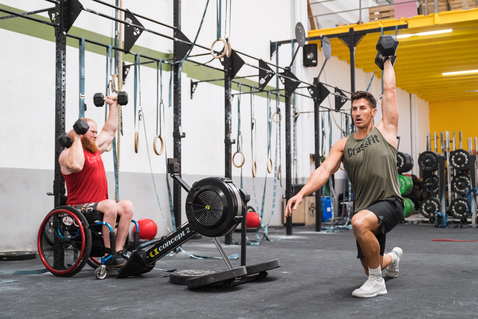
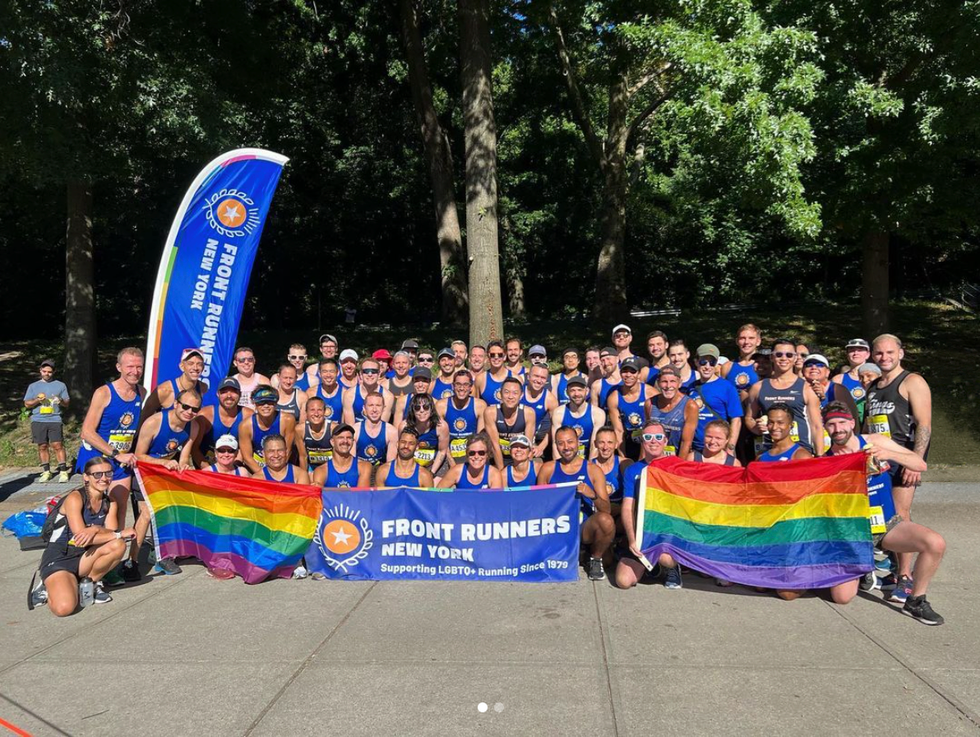
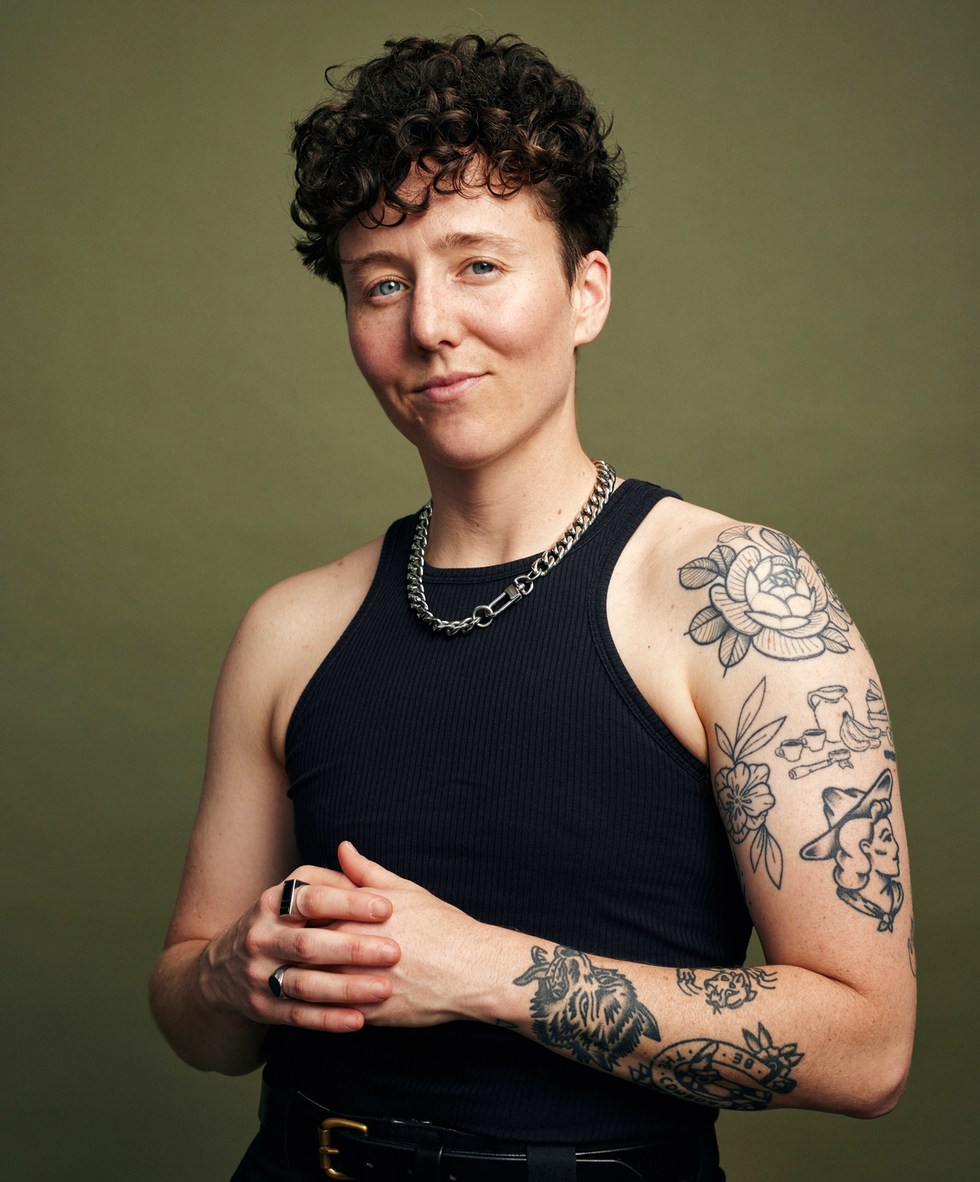

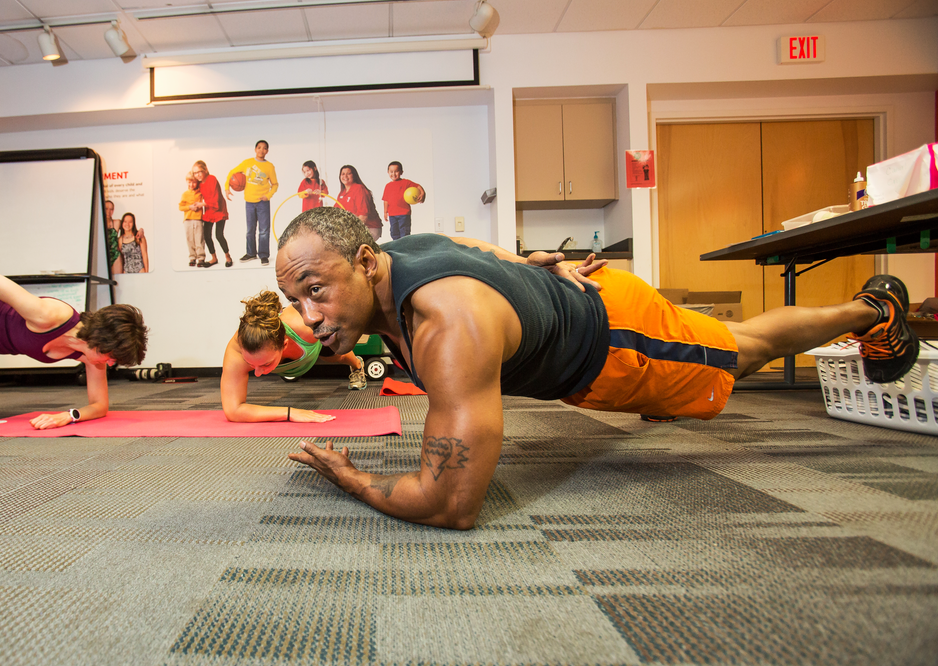
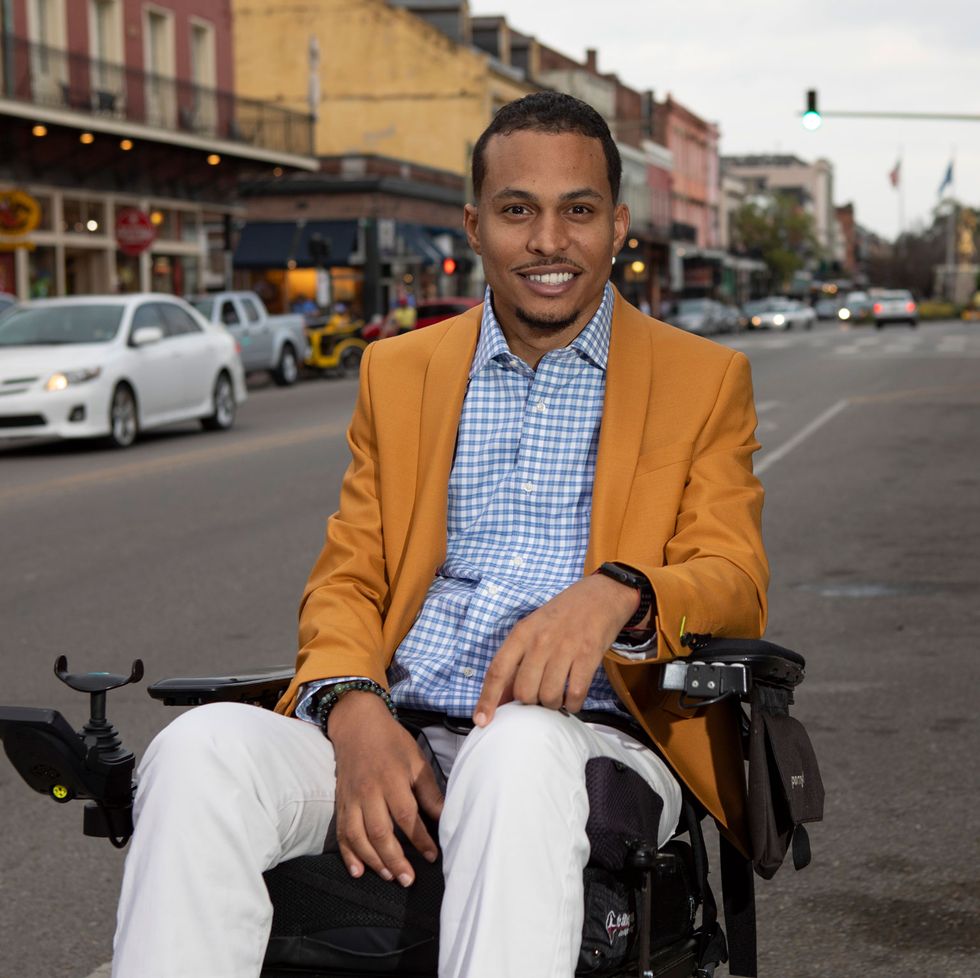
Comments are closed.